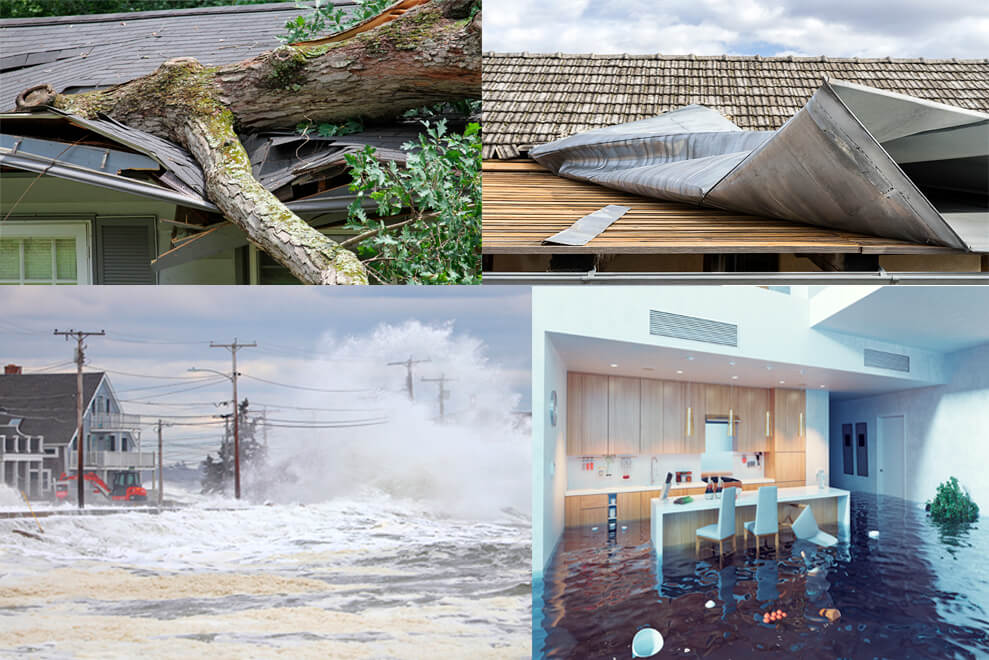
Nor’easters are storms along the East Coast of North America and can develop in the early fall, through spring; typically between September and April. These storms get their name because of the strong northeastern winds over coastal areas between Georgia and New Jersey, within 100 miles east or west of the East Coast.
Nor’easters pose a potential for substantial property damage as the storms nearly always bring precipitation. Nor’easters can produce heavy rain or snow, as well as winds of gale force, rough seas, severe coastal flooding, coastal erosion, hurricane-force winds, or blizzard conditions. Property owners can expect trees down and roofs damaged, leading to interior water damage of your contents.
One of the best ways to prepare for these storms is to ensure you have a disaster recovery plan in place. Within that plan, having a relationship with a public adjuster allows you to save time and eliminate the frustration of dealing with the complicated process of property insurance recovery; should you face the unfortunate task of rebuilding after a storm such as a Nor’easter.
A public adjuster will step in and manage all aspects of a residential or commercial claim. With United Public Adjusters, we make sure that insurance companies don’t take advantage of our clients. We fight for you and make sure you get the most for your claim. We’re with you from the beginning to the end.
We will fight fearlessly on your behalf and assess:
BUSINESS PROPERTY DAMAGE / Business Owner Policy (BOP), including:
- Business Personal Property (BPP) including Property located in or on the buildings at the described premises or in the open (or in a vehicle) within 100 feet of the described premises. This can include property you own or lease (office furniture, equipment, and inventory), as well as tenant’s improvements and betterments.
- Improvements and betterments are permanent fixtures, alterations, additions or installations to a building by and at the expense of the tenant.
- Business Interruption intended to provide funds necessary while a business’ operations are suspended as a result of damage caused by a covered peril. Business interruption pays a business’s net profit or loss before income taxes and continuing operating expenses, including payroll.
- Extra Expense covers expenses while mitigating the business loss, or increased costs in continuing business in the wake of a loss. Reimbursement can include moving a covered business to a different location while the covered property is restored.
- Business Income intended to help you cover loss of income if your business has to temporarily close due to damage caused by a covered loss.
- Equipment breakdown covers your equipment, including computers.
- Crime insurance covers your business from fraud, theft, and forgery.
RESIDENTIAL PROPERTY DAMAGE / Homeowner Policy, including:
- Dwelling, Other Structures, and Personal Property.
- Ordinance or Law which provides coverage in the event that building codes (placed after a structure was built) require additional features not contained in the covered structure at the time of loss
Loss of Use including:
- Additional Living Expense pays the costs of living in a temporary location (hotel, house or apartment rental) if a covered loss makes the damaged home unlivable.
- Fair Rental Value pays for lost rental income while a property is inhabitable.
COMMERCIAL PROPERTY DAMAGE / COMMERCIAL POLICY, including:
- Property Damage including buildings, fixtures, machines, furnishings, raw materials, and inventory.
- Business Interruption intended to provide funds necessary while a business’ operations are suspended as a result of damage caused by a covered peril. Business interruption pays the net profit or loss of business before income taxes and continuing operating expenses, including payroll.
- Extra Expense covers expenses while mitigating the business loss, or increased costs in continuing business in the wake of a loss. Reimbursement can include moving a covered business to a different location while the covered property is restored and can include equipment breakdown coverage.
- Contingent Business Interruption includes benefits to cover lost profits and extra expenses resulting from damage to a third party’s property.
- Ordinary Payroll Coverage provides for salaries as a continued expense and can include hourly employee expenses.
- Loss of Rents pays for lost renter’s income while a property is restored.
- Extended Period of Indemnity covers business interruption and extra expense benefits beyond the period of restoration.
- Civil Authority covers business income benefits during mandatory evacuations.
- Utility Services – Time Element extends business income and extra expense insurance coverage for losses caused by a utility that provides a business with water, power, or communications.
- Loss of Ingress or Egress coverage for when ingress to or egress from real and personal property is prevented.
MY FREE CONSULTATION
"*" indicates required fields
